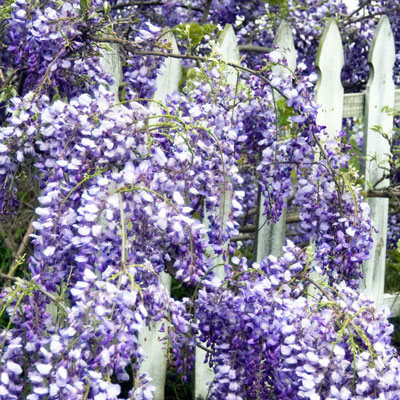Question of the Week – Number 2: October 29, 2020

“Why doesn’t my wisteria bloom any longer? It did for years.”
There are several possible reasons:
• If you are pruning it in the fall or winter, you’re cutting off the flowering wood. Wisterias bloom on growth they made in the prior year, so hold off on pruning until after the blooming season.
• If it’s in shade, that will seriously impact its blooming. Many times, we plant them in full sun, but they either grow into shaded locations or shade trees grow larger and end up covering the wisterias.
• If you’re giving it a great deal of nitrogen in late summer and fall (as you would with a fall lawn feeding), that can come at the expense of production of flowers. Nitrogen promotes vegetative growth.
• In areas with alkaline soils, wisterias often suffer iron deficiency. That can weaken the plants enough that they do not bloom properly. Try adding iron and a sulfur soil-acidifier, perhaps in a tandem product, to see if the plant’s vigor improves.
• It might be a little late to try this (usually better in early September), but root-pruning often helps. Use a sharpshooter spade to cut a slit 18 to 24 inches out from the trunk all the way around the plant. The shock of having roots cut often will trigger the plant to produce flower buds.
As I usually tell people after I give them those possible reasons for their wisterias’ failure to bloom, “The answer is in there somewhere. It may even be a combination of several of those factors. At that point I have to turn it back to you to do the detective work.”
